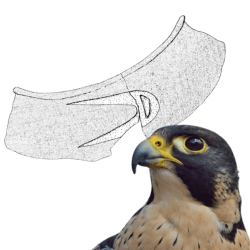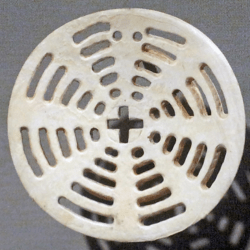Why is Cahokia Called “City of the Sun?”… ☀️
Q & A: By Angela Cooper, Service Specialist II
Q: Why is Cahokia called “City of the Sun”?
A: To answer this question, I must give a little bit of background on the development of the Interpretive Center. In the 1980s, the State of Illinois hired the exhibition development company, Hilferty and Associates. Hilferty and Associates worked with Bill Iseminger and Margaret Brown to create the didactic labels to educate visitors about the site. From their website,
“Cahokia is an important part of the design legacy of Hilferty and Associates and is well known by many with an interest and focus in Native American culture and archaeology. Hilferty’s innovative approach bridged an immersive experience, which begins in the orientation theater, directly into the exhibit floor, creatively using a variety of high and low technology and special effects available at the time. The experience is still impactful today, and a well-known project that stands the test of time.” (Hilferty and Associates 2024)
Part of this legacy includes the phrase, “City of the Sun.” According to Bill Iseminger, the company wanted a hook to catch peoples’ attention and to remember the site (personal communication 2024). It’s also the name of the orientation show. They created the phrase after learning how the site was a large Indigenous city and noticing the sun motifs on artifacts and solar associations, like Woodhenge.

Fig 1: Ramey Incised Pottery Sherd with Scrolling Sun Motif. Photo Courtesy of Cahokia Mounds State Historic Site.
Some artifacts from the site that show sun iconography include Ramey Incised pottery, the Birdman, the Fenestrated Cross shell gorget, and the Woodhenge beaker. Ramey Incised pottery has many design motifs, but I’ll be mentioning only two designs. Figure 1 shows the Scrolling Sun. We see this and similar designs all throughout the Mississippian world. Figure 2 shows the Forked Eye motif. The forked eye is a representation of the colored feathers around a peregrine falcon’s eye (Figure 2). Because it can fly, the falcon is associated with the Upper World, which includes the sun, moon, and stars. The association to the Upper World then became an association with the sun. Being a fearsome hunter, the falcon is also associated with hunters and warriors. We see the forked eye motif around the eyes of birdmen or warriors on other artifacts found in the Mississippian world.

Fig. 2: Ramey Incised Pottery Sherd with Forked Eye Motif & Profile of Peregrine Falcon. Image modified from Pauketat & Emerson 1991.
The Birdman Tablet is a representation of the three worlds. The bird part of the birdman represents the Upper World. The man part of the birdman represents the Middle World. The crosshatching on the back represents the Lower World. With the association to the Upper World, the Birdman also represents the sun.

Fig 3: Fenestrated Cross Shell Gorget Photo Courtesy of Cahokia Mounds State Historic Site.
The Fenestrated Cross shell gorget is another example of the sun motif (Figure 3). The cross is a representation of the eternal fire, which came from the sun. The cross is surrounded by radiating lines that represent the sun’s rays. On some artifacts with warriors or birdmen, you will also see the cross motif .
One final artifact and site feature that inspired Hilferty and Associates to call Cahokia Mounds the “City of the Sun” is the Woodhenge beaker (Figure 4) and Woodhenge itself (Figure 5). The Woodhenge beaker has a cross motif in the center of the vessel body. The cross, representing the eternal fire, is surrounded by a “Q” shape. This “Q” represents the path the sun takes around the Earth starting from the winter solstice sunrise.Further surrounding and radiating from the cross and path are the sun’s rays represented as lines.
Finally, Woodhenge is the most apparent representation of Cahokia’s association with the sun (Figure 5). Woodhenge is a solar calendar that marks the growing and harvesting seasons by watching the sun’s changing rising positions. Here at Cahokia Mounds we observe the solstices and equinoxes every year on the Sunday closest to the actual dates. Although we use only two posts to see each of these events, the other posts probably related to other sacred events in the Mississippian calendar. We also know that certain stories are told during certain parts of the year within contemporary Indigenous cultures, and many are related to celestial objects and events in the night sky.

Fig 4 & 5: Woodhenge Beaker – Photo Courtesy of Cahokia Mounds & Visitors Viewing Sun from Woodhenge – Photo Courtesy of Caroline Caligiuri.







